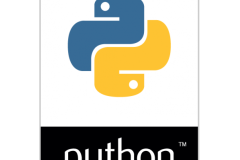This SAS training class covers SAS Base and Advanced Modules. • SAS/BASE • SAS/SQL • SAS/MACROS • SAS/GRAPHS • SAS/STAT • SAS/ACCESS • SAS/ODS
Topics Covered
1. Introduction • How to Use this Document • Little Bit History About SAS • What is SAS? • Launching SAS • Windows in SAS for Windows • Menus in SAS • Working within SAS • Using the Cursor • Using Icons • Using the Enhanced Editor • Writing a SAS Program: the DATA Step 2. Introduction to SAS Programming • Introduction to SAS® • SAS® Software Versions • Using SAS for Windows • System Requirement • Installing SAS® 9.1.3 for MS.Windows,Unix,Linux,Vms,Open/390 3. Accessing Data • Introduction • LIST,COLUMN,FORMTTED AND NAMED input to read raw data • Using Various Components of an INPUT Statement • Importing raw data from Excel files, Text files, CSV files, ODBC and Access files Etc... using the import procedure, data step and Import wizard • Set statement to read and combine SAS data sets • Using the merge statement to combine SAS data sets • Appending multiple SAS data sets • Explaining about User created functions and system defined functions • Explaining about Types of functions such as Character, Numeric, statistical or mathematical and date or time functions • Statements and types, global statements and local statements • Using loops for easy manipulations • SQL procedure to create data sets • SQL procedure to query multiple tables 4. Creating Data Structures • Introduction • Creating temporary and permanent SAS data sets • Preparing temporary libraries and permanents libraries • Applying conditional assignments and conditional subsets • Using data step statements to export(or write) data to a file • Exporting data to excel and access using the export procedure • Understanding how the data step is compiled and executed • Using data dynamic exchange(DDE) to import excel data • Exporting SAS files to Excel Using DDE. 5. Managing Data • Introduction • Modifying variable attributes in the data set • Assignment statement to accumulate variable values across executions of the data step • Using SAS functions to manipulate character data, numeric data, and SAS date and time values • Creating User defined in formats and Formats • Changing SAS default setting using system options, data step options and statement options • Use system defined and user defined formats • Use system defined and user defined in formats • Use SAS functions to convert character data to numeric data and vice versa • Processing data using SAS arrays • Sorting observations in a SAS data set • Using SAS utility procedure to investigate SAS data libraries 6. Generating Reports • Introduction • Generating reports using the PRINT,MEANS,FREQ,TABULATE,REPORT etc…procedures • Generating HTML, RTF, PDF, EXCEL, TEXT, CSV, and PDF reports using ODS statements • Enhancing reports with options and statements 7. Handling Errors • Introduction… • Recognizing and correcting syntax and non-syntax errors • Examining and resolving data errors • Program debugging techniques SAS Statistics 8. Descriptive Statistics • Introduction statistics • Overview • Data Presentation • Data Characteristics: Descriptive Summary Statistics • Probability: Basic Concepts • Basic Probability Distribution • Sampling & Estimation 9. Categorical data Analysis • Introductions • Procedures • Cross tabulations • Frequencies from one way frequencies to N way frequencies 10. Hypothesis Testing • T-Test : Testing differences between two means • Random assignment of subjects • Two independent samples : Distribution free tests • One-tailed vs. two tailed tests • Paired t-tests(related samples) 11. Hypothesis Testing (More than two groups) • One-way analysis of variance • Analysis of variance : two independent variables • Interpreting significant interactions • N-way factorial designs • Unbalanced designs: Proc GLM 12. Regression Analysis • Introduction • Simple regression and multiple regression analysis • Logistic regression • Non-experimental regression • Interpretation about statistics such as (R square, adjusted R square, etc…..) 13. Correlation Analysis • Introduction • Positive correlation and negative correlation • Multiple correlation and partial correlation • Linear and non-linear correlation SAS Macros • Introduction • Creating macro variables • Reusing macro variable • Working with system defined macro variables and user defined macro variables • Converting Global macro variables into local macro variables vice versa • Functions and routines, its different • Introduction to Macro Processing • Defining and Calling Macros • How the Macro Processor Compiles a Macro Definition • How the Macro Processor Executes a Compiled Macro • Summary of Macro Processing • System defined macro options • Creating macro and Reusing macro • Executing a macro program • Passing values to a macro program through macro parameters • Using SAS Base functions and Proc SQL statements in SAS macros • Using conditional statements in macros • Manipulating SAS Base programs to macros • Macro quoting functions • Macro facility error messages and debugging • Using the stored compiled macro facility for saving macro • Arithmetic and logical expressions • Reading external files using macros • Writing SAS files using macros • Stepwise method for writing macro programs • Saving Macros in an Auto call Library • Saving Macros Using the Stored Compiled Macro Facility SAS SQL • Introduction to the SQL Procedure • What Is SQL? • What Is the SQL Procedure? • Comparing PROC SQL with the SAS DATA Step • Creating data sets using SQL procedure • Overview of the query window • Retrieving Data from a Single Table • Retrieving Data from Multiple Tables • Creating and Updating Tables and Views • Inserting Rows into Tables • Updating Data Values in a Table • Deleting Rows and Tables • Altering Columns • Creating an Index • Using SQL Procedure Tables in SAS Software • Creating and Using Integrity Constraints in a Table • Using PROC SQL Options to Create and Debug Queries • Improving Query PerformanceHYPERLINK "a001385596.htm"Accessing SAS System Information Using DICTIONARY Tables • Using the Output Delivery System (ODS) with PROC SQL • Performing simple queries • Combine tables using inner join, outer join(outer left join, outer right join, outer full join) • Summarizing groups of data • Sub setting groups of data • Handling missing values • Handling embedded blanks in column names • Using SAS base functions in SQL • Building calculated columns • Reading oracle data tables into SAS by pass through facility • Connecting to Oracle, DB2, SYBASE, EXCEL, ACCESS, ODBC, OSIRIS, REMOTE, SPDE, SPSS, TERADATA, XML, AND XPORT engines etc…. to import data sets • Explaining about conditional statements • Modifying variables using Base Options in SQL • Creating macro variables in SQL SAS Graphs • Introduction • Drawing graphs by programming and menu driven • Using colors and images • Language Elements • SAS Data Sets • Using Engines with SAS/GRAPH Software • Running SAS/GRAPH Programs • Procedure Output and the Graphics Output Area • Printing Graphics Output • Storing Graphics Output in SAS Catalogs • Modifying SAS/GRAPH Output • Transporting and Converting Graphics Output • Using SAS/GRAPH Colors and Images • Specifying Colors in SAS/GRAPH Programs • Specifying Images in SAS/GRAPH Programs • GChart • GPlot • Vbar • Hbar • Block bar • Star chart • Pie chart • Histogram • Box plot • Probability plot • Scatter plot (two dimensional and three dimensional) • Surface plot SAS ODS • Creating HTML outputs Using ODS • Creating HTML outputs with a Table of Contents • Selecting ODS tables for Display • Excluding ODS tables for Display • Exporting SAS outputs • Preparing PDF,RTF,CSV,XML,HTML files using ODS • Creating an output data set from an ODS tables • Generating outputs in colors • Creating an output data set from sub setting the data • Determining the Names of ODS Tables • Using the TEMPLATE Procedure to Customize Output • Creating HTML Output, Linked Within a Single Analysis • Creating HTML Output, Linked Between Analyses
Who should attend
Any graduate/MBA/Post Graduates
Pre-requisites
No pre-requisites
What you need to bring
Nothing
Key Takeaways
SAS Programming. Data preparation using SAS, Statistical Analysis using SAS and Reporting in SAS











